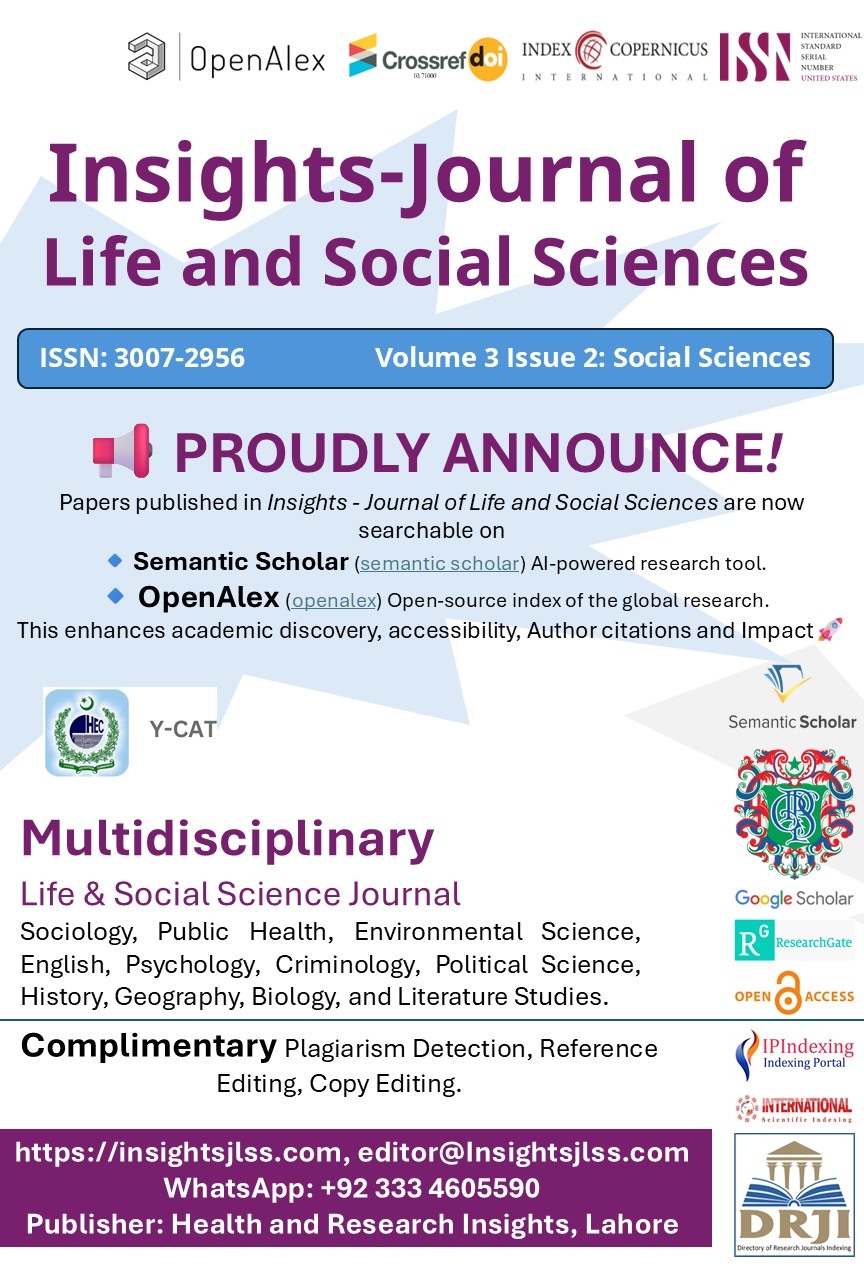INFLUENCE OF SALT STRESS ON THE GROWTH OF BRASSICA SEEDLINGS
Main Article Content
Abstract
Background: Soil salinity is one of the leading abiotic stressors limiting agricultural productivity worldwide, particularly affecting the early growth stages of sensitive crops like Brassica napus L. (canola). Salinity induces osmotic and ionic stress, disrupting physiological and morphological processes vital to plant establishment and yield. In Pakistan, where over 6.22 million acres of land are salt-affected, improving salt tolerance in oilseed crops remains a critical priority for food security and import reduction.
Objective: The present study aimed to evaluate the response of ten Brassica genotypes under varying levels of salt stress and identify salt-tolerant candidates suitable for further breeding programs.
Methods: A glasshouse experiment was conducted using a factorial arrangement in a randomized complete block design with four treatments (0, 50, 100, and 150 mM NaCl) and three replications. Ten Brassica genotypes were evaluated for germination percentage, root length, shoot length, root-to-shoot ratio, seedling length, and seedling vigor index. Data were collected on the 15th day after sowing and subjected to analysis of variance to assess significance across genotypes, treatments, and interactions.
Results: Significant variation (p < 0.001) was observed among genotypes, treatments, and their interactions for most traits. Maximum germination (91.3%), shoot length (4.18 cm), and root length (2.04 cm) were recorded at 50 mM NaCl. Seedling vigor index peaked at 558.57 in UAF-11 and dropped to 182.51 at 150 mM NaCl. Genotypes UAF-11, AARI-Canola, and NIFA Gold showed consistently higher tolerance and growth performance across treatments.
Conclusion: Moderate salinity (50 mM NaCl) promoted early seedling growth in selected Brassica genotypes. UAF-11 emerged as the most salt-tolerant genotype, followed by AARI-Canola and NIFA Gold, indicating their suitability for use in future breeding programs targeting saline environments.
Article Details

This work is licensed under a Creative Commons Attribution-NonCommercial-NoDerivatives 4.0 International License.
